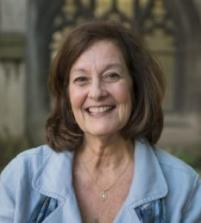Sanctuary or Spectacle?
Two weeks ago, Elvira Arellano and her seven-year-old son sought sanctuary in the Adalberto United Methodist Church of Humboldt Park, Chicago, instead of reporting to the Department of Homeland Security for deportation
Two weeks ago, Elvira Arellano and her seven-year-old son sought sanctuary in the Adalberto United Methodist Church of Humboldt Park, Chicago, instead of reporting to the Department of Homeland Security for deportation. Arellano, a 31-year-old Mexican woman, was working as a cleaning woman at O'Hare airport in 2002 when she was arrested during the immigration sweep that followed the September 11 attacks; it was discovered then that she had been deported previously and had re-entered the country illegally. Fighting to stay in the U.S. with her son — himself a U.S. citizen — who was receiving medical treatment, Arellano was granted three stays of deportation beginning in 2003.
Though initially sympathetic to the mother's concern for her child, some supporters find Arellano's continued claims against deportation harder to justify. "It is an unfortunate truth that scores of people are in the same situation as Elvira and her family," Illinois senator Dick Durbin said in a statement recently. "We cannot fix the injustices of this system with private bills. Only comprehensive immigration reform can permanently remedy this situation." Though the debate around immigration has become increasingly polarized of late, there is widespread agreement with the sense of Sen. Durbin's statement: U.S. immigration policies and procedures have failed U.S. citizens and immigrants, legal and illegal alike; reform is necessary. But such reform will not come easily or quickly — and so what of the current reality of the countless parents and children who find themselves caught in the punishing gears of immigration's badly broken machinery?
Taking up residence in the church was her last resort, Arellano asserts, since she does not intend to return to Mexico. She and her supporters invoke a tradition attributed to the early Greeks which allowed a fugitive to seek sanctuary from prosecution by installing himself in a temple or designated sacred space, affording the lawbreaker a limited reprieve from the punishment meted out by an often imperfect justice system and time to consider his next move. Historically, while a fugitive resided in sanctuary, the community was responsible for his or her nourishment and safety; otherwise, the individual was not to be hindered or harassed.
This practice received elaborate codification in medieval England. In more recent times, it has been employed as a strategy of direct peaceful action — most notably during the 1980s, when dozens of U.S. congregations sheltered Central Americans fleeing war in their homelands. There is no legal protection for the practice of sanctuary in American law; several ministers were convicted for their participation in the Central American sanctuary movement, though their actions did secure new lives for hundreds of refugees and ultimately led to revised U.S. policies concerning Central American immigration.
From its ancient beginnings, the appeal of a "time out" for lawbreakers has consistently relied on a twofold sensibility which exceeds any single religious tradition, but which resonates with much classical religious anthropology. The practice of sanctuary embodies compassion for the human condition, which transcends citizenship or legal status, while maintaining skepticism about the adequacy of human applications of justice. This dual perspective is surprisingly relevant to our culture's current situation, suggesting that while we, as human beings, must rely on the human community to ensure even our most basic needs, one of those needs may well be for protection against the community's own life and institutions, which, unrestrained, can threaten our humanity.
In the relentless local media coverage of the Arellano case these past two weeks, there has been very little talk about the meaning or utility of sanctuary as either a religious or a deeply human practice. The storefront church has become a stage for political rhetoric and spectacle, including candlelight vigils by the family's supporters and staged television sound bites by activists who oppose broader immigration laws. These appeals are most often made on behalf of the "rights" of the speaker's own constituencies; religious language is invoked to enlist God's imprimatur for "our side." Rather than observing sanctuary's mandates of space and time for human healing and human decision-making to occur, partisan interests and institutions have continued their machinations.
Occasionally, though, the relentless media eye is startled by a glimpse of the human at the heart of this issue — the sadly serious face of the bewildered child, an early report that Arellano had been suffering from the flu, a more recent one revealing that she has moved upstairs to get a bit more distance from the din of the demonstrations on the street. As a human being caught between the rock of broken immigration law and the hard place of making a sustainable life for herself and her son, Arellano is entitled to sanctuary — compassion, respect, and noninterference — as she chooses her next course of action. Instead, her bid for safety threatens to become yet another spectacle in the noisy public theater that has replaced serious dialogue about renewing social policy for a plural America.
We would do well as a community and a culture to insist on that respectful space not only for Arellano, but for all of us. Perhaps it is time to visit the practice of sanctuary again, at least in our imaginations — to revive our richer theological and humanist sensibilities about the complexity of human existence, the fragility of human life, and the provisional nature of human decision-making, and to extend to one another the possibility of time and space — free of noise, threat, or manipulation — in which to choose to do the right thing.
Cynthia Gano Lindner is Director of Ministry Studies and Clinical Faculty for Preaching and Pastoral Care at the University of Chicago Divinity School, and associate staff at the Center for Religion and Psychotherapy in Chicago.


